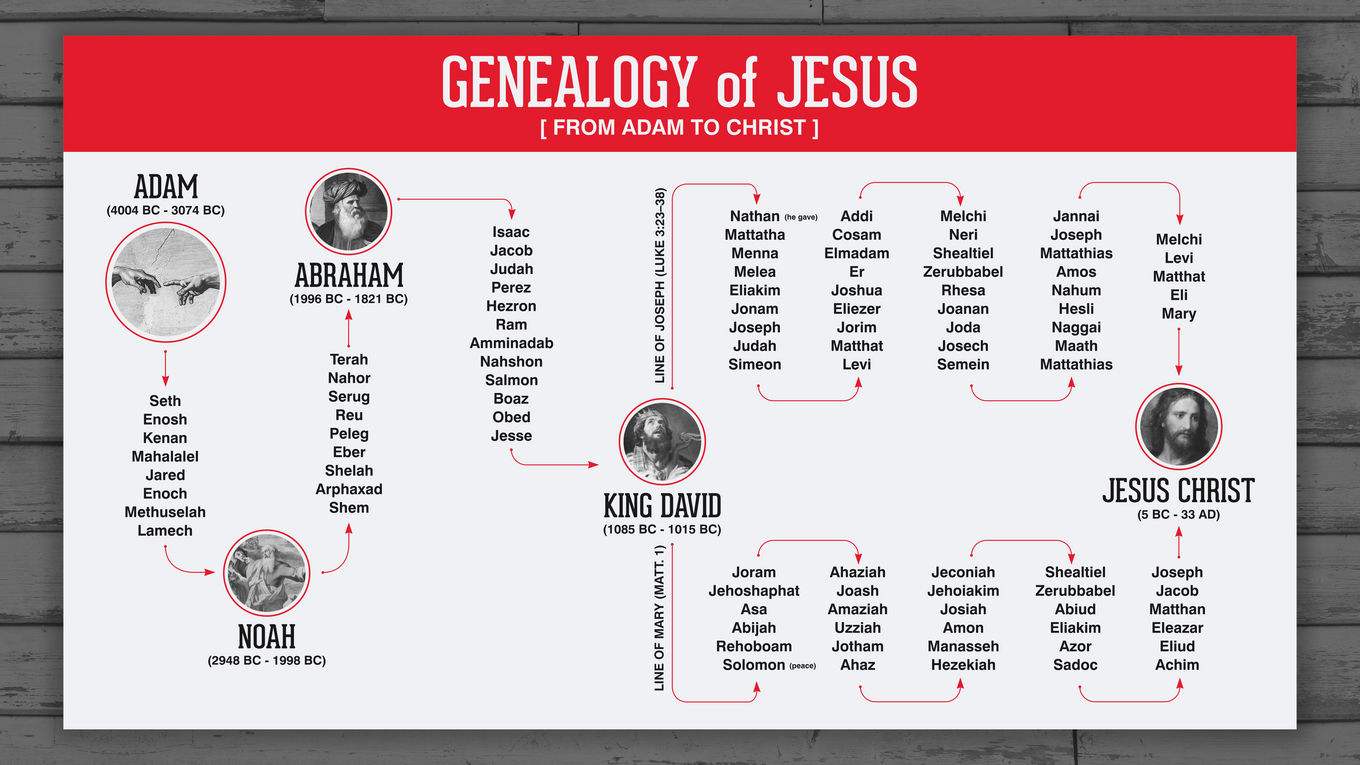So all the generations from Abraham to David are fourteen generations; and from David until the carrying away into Babylon are fourteen generations; and from the carrying away into Babylon unto Christ are fourteen generations.
Matthew 1:17 (KJV)
Fourteen generations – I know Matthew, chapter 1, is a pretty boring chapter. It details the genealogy of Yeshua and lists a bunch of names. Some of them we might recognize, and others we don’t. We just skim through hoping to get to something interesting.

And when we finally read through this list of names, Matthew shows us how perfect it all just happened to lay out. He goes on to explain how there are three sections of fourteen generations each. So we stop and reflect. That’s kind of cool… and then we read on. But I want you to stop again and notice that Matthew isn’t recording something analytically like a Greek might. He’s writing as rabbinic Judaism would… and fudging the numbers is allowed.
First thing to note is that David is included in the first fourteen generations, but then Matthew includes David again in the next fourteen. You can’t count someone twice, right? Secondly, if you look back among the generations, there’s someone actually missing – Jehoiakim, who was Josiah’s son. And finally, add up all the names in the list. You’ll count a total of 41. But what’s three sections of fourteen generations each add up to? You guessed it, 42. How could Matthew allow these mistakes in his opening chapter of the gospel?
It’s because Matthew is a Jew with a Judaic worldview. Fudging the numbers was perfectly acceptable among Hebrews and Rabbinic thought when trying to point something out. They would pull verses out of context all the time. Paul does this as well in 1 Timothy 5:18 – he uses a law which has nothing to do with paying workers in the assembly, but applies the verse exactly to that. This is rabbinic Judaism, and it’s perfectly okay.
So what’s Matthew trying to point out?
He’s calling attention to a pattern paradigm (3 sections of 14) rather than accurate historical record. The name “David” has a numeric value of 14, and Matthew uses a fudged genealogy to prove that Yeshua is the promised King from the seed of David.
This is crucial to understand. The authors of the New Testament were Jews who adhered to a Judaic form of writing. They used pattern paradigms over historic records, they worked within well established theologies and practices that stemmed from Hebraic thinking to form stories about important events. Being chronologically accurate wasn’t important. We should keep this in mind when we read these Jewish writings – the Bible.
The interpretation of Scripture within Judaism is built on the idea that “events form patterns, and patterns govern what is going to happen in the future.” (Neusner, Judaism When Christianity Began, p 80)

Leave a Reply